

Tao Te Ching
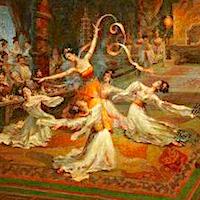
Sui 隋朝 (581 – 618 CE)
Sui 隋朝; Suí cháo (581 – 618 CE)
Like the Qin dynasty, the Sui was short on years but long on influence. It re-unified the north and south, re-established rule by the ethnic Hans, and created a foundation for the golden-era Tang Dynasty. It promoted and spread Buddhism, greatly reduced economic inequality, standardized coinage, and upgraded agricultural methods that tremendously improved productivity creating surplus and a rapid population growth. This dynasty also built the Grand Canal that linked the three main but separated parts of China together. For centuries after this reign ended, this project facilitated domestic trade, cultural and military exchange, the shipment of grans and people. This and other massive building project like building a new capital and vastly extending the Great Wall conscripted millions of workers, lost countless lives, and demanded punishing taxation. This over-extended the government, instigated many popular revolts.
Sages (8)

Dazu Huike (Dz Huk)
487 – 593 CE
Student of and lineage holder after Bodhidharma, 29th Zen Patriarch, 2nd Chinese Patriarch of Chan, insightful scholar of both Taoism, Buddhism, and ancient Chinese texts; Huike received the title Dazu (“Great Ancestor”) from the Tang emperor De Zong. To choose a successor when Bodhidharma planned to return to India, he asked his disciples to express their realization. Each gave poetic answers but Huike only stood silently invoking Bodhidharma’s observation, “You have attained my marrow.” Hike’s teachings diverted from the Indian tradition of a gradual path and emphasized sudden enlightenment, realization through meditation rather than study, and practice free from any gaining ideas or dualism.
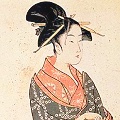
Empress Suiko 推古天皇 (Suiko-tennō)
554 – 628 CE
Emperor’s daughter, Buddhist nun, first and only confirmed Japanese Empress Regnant of Japan; Suiko’s many achievements include adopting a more useful calendar cycle, the 17-article constitution (written by Shotoku), and the official recognition of Buddhism by the issuance of the Flourishing Three Treasures Edict in 594. She was one of the first Buddhist monarchs in Japan, sponsored Buddhist temples and monasteries, and firmly established Buddhism in Japan. She orchestrated China’s first diplomatic recognition of Japan and close cultural contact with both China and Korea.
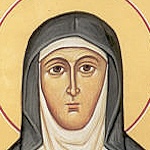
Hilda of Whitby
614 – 680 CE
Living in a brutal time of violent warlords and kings, Hilda’s mother was a poor, homeless widow. From this humble and challenging beginning, she became a powerful advisor to officials, bishops, and kings. The historian Bede wrote, “All who knew her called her mother because of her outstanding devotion and grace.” Abbess and founder of several monasteries, five men who lived and studied at one of these became bishops and two of them are now revered as saints. She is considered a patron saint of poetry, learning and culture.

Jianzhi Sengcan 鑑智僧璨 (Jiànzhì Sēngcàn)
529 – 606 CE
The Third Chinese Patriarch after Bodhidharma and thirtieth Patriarch after the Buddha, Sengcan wrote famous Chinese poems called Xinxin Ming. Because of a Buddhist persecution of the time, he went into hiding in the mountains and later wandered without a home for 10 years. He taught the elimination of all duality, going beyond words to the sense, and the contemplation of wisdom. Hsin Hsin Ming
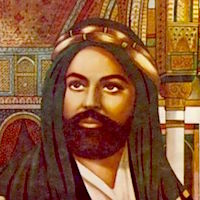
Muhammad محمد; محمد;
570 – 632 CE
Gfted political leader, sage lawmaker, just judge, sincere devotee of integrity; Muhammad was praised by Leibniz, Rousseau, Napoleon, and Thomas Carlyle but Voltaire thought of him as a symbol of fanaticism and called him "a sublime and hearty charlatan.” Although his integrity can be argued, his influence is indisputable. Founder and prophet of Islam, he launched a political and religious revolution that rapidly transformed a poverty-drenched Arabia from a desert of motley, contentious tribes into a force that within 100 years conquered half the Mediterranean world, Byzantine Asia, all of Persia and Egypt, and most of North Africa. A simple ascetic in most ways, he used eye shadow and perfume, dyed his hair, and kept an active harem. Building on the Zoroastrian, Jewish, and Christian traditions; he described elaborate visions of both heaven and hell that forged a unified, monotheistic tradition that unified the Arabs, spread throughout the world, and is still a potent influence today.

Prince Shotoku
574 – 622 CE
The son of emperor Yomei, Shotoku inspired a devotional tradition of protecting Japan, the Imperial Family, and Buddhism. His commentary on three famous Buddhist sutras in 615 CE are considered the first Japanese text. He also wrote the first Japanese constitution and is credited with creating a strong and united Japan. Still revered, his picture is on the Japanese 10,000 yen currency note.
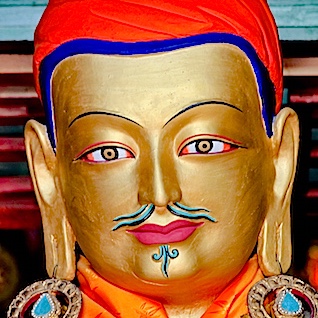
Songtsen Gampo སྲོང་བཙན་སྒམ་པོ
569 – 649 CE
Founder of the Tibetan nation, Songtsen Gampo unified Tibet, introduced Buddhism, many new cultural and technological improvements, created the Tibetan alphabet, the first constitution and model laws. After winning a war against China and influence over Nepal, he was given Nepalese and Chinese princess wives who helped him establish trade with surrounding countries and a golden age for Tibet. In Tibetan tradition, both wives are considered incarnations of Tara, the Goddess of Compassion, and Songtsen Gampo as a manifestation of the bodhisattva, Avalokiteśvara.
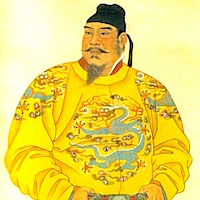
Taizong of Tang 唐太宗 唐太宗 (Li Shimin)
598 – 649 CE
One of China’s greatest emperors, co-founder of the Tang Dynasty which became the world’s most civilized power, and architect of a golden age—China’s most creative period; Taizong’s reign became the standard and measure for all future leaders. A scientific and Confucian scholar, he began by killing his brothers and expanding the empire but soon devoted himself to increasing peace and prosperity. Without personal dogma and prejudice, he welcomed Buddhist monks, Nestorian Christians, Zoroastrians, and made the capital so beautiful that it attracted hordes of tourists from as far away as India and Europe. He wrote a book reconciling Buddhism and Taoism, another one on government that became a popular reference for leaders in many different countries, promoted the arts, and it was said of people during that time, “whoever was a man, was poet.” Over 1000 years later, a Manchu emperor commissioned an anthology of Tang poems that included 48,900 poems by 2,300 poets.
Chinese Eras
Xia Dynasty 夏 (2100 – 1600 BCE)
Shang Dynasty 殷代 (1600 – 1046 BCE)
Western Zhou 西周 (1046 – 771 BCE)
Eastern Zhou 東周 (770 – 256 BCE)
Spring and Autumn period 春秋时代 (770 – 476 BCE)
Warring States period 春秋时代 (476 – 221 BCE)
Qin Dynasty 秦朝 (221 – 206 BCE)
Three Kingdoms 三國時代 (220 – 280 CE)
Southern and Northern 南北朝 (420 – 589 CE)
Tang Dynasty 唐朝 (618 – 907 CE)
5 Dynasties 10 Kingdoms (907 – 960 CE)
5 Kingdom of Dali 大理国 (937 – 1253 CE)
Western Xia 西夏 (1038 – 1227 CE)
Southern Song (1127 – 1279 CE)
Comments (0)